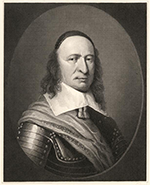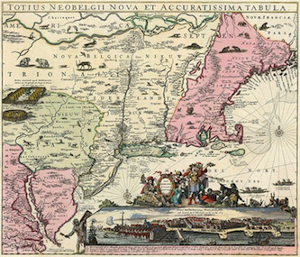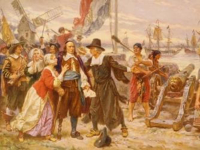Peter Stuyvesant was the most famous director-general of the New Netherland colony in 17th-Century North America. He was born in 1610 in the Netherlands. Historians differ on where he was born. Some say it was Scherpenzeel; others say it was Peperga. Not much is known of his early life. He studied languages and philosophy at the University of Franeker. 
The Dutch West India Company appointed him to various positions in the Caribbean and South America and then, in 1638, as director of the ABC Islands: Aruba Bonaire, and Curaçao. The Netherlands at this time was involved in frequent skirmishes with Portugal and Spain. In one of these, a 1644 attack on the Portuguese island of St. Martin, a cannonball crushed his right leg; as a result, he went the rest of his life wearing a peg leg. 
Stuyvesant, who lived with his wife, Judith, on a farm on what is now the Bowery, is most well-known as being director of the New Netherland colony. He led the colony for 18 years. He set up an advisory board but kept almost all of the governing power for himself. He was known as a stern leader, who issued pronouncements based in religious doctrine. At the same time, he repaired the fort, founded a public school, appointed fire wardens, introduced a weekly market, standardized weights and measures for baked and other goods, and encouraged greater business enterprise. During his tenure, the colony prospered. Trade increased, and the population grew. Stuyvesant also, in 1655, led a group of Dutch settlers in what amounted to a takeover of New Sweden, a colony founded by Peter Minuit. The Dutch absorbed that settlement into their colony. In 1664, New Netherland came to a rather sudden end. England and the Netherlands went to war, initially over business concerns in western Africa. The conflict spread to North America and came to be called the Second Anglo-Dutch War. (The First Anglo-Dutch War was fought entirely at sea, in 1652–1654.) 
England's King Charles II had given his brother, James, Duke of York, the right of ownership of large amounts of territory in North America; this included the entirety of New Netherland. The Dutch fleet had been severely depleted in the naval war of a decade before, and the colony had nothing like what the English sent (four warships and a few hundred soldiers) to press their case in the summer of 1664. Stuyvesant, wishing to avoid widespread bloodshed, surrendered the colony to the English. In September 1664, New Netherland became New York. Stuyvesant was called back to Amsterdam and received a severe reprimand. He was allowed to return to North America, where he settled on his farm to live out his life. He died in 1672 and is buried in what is now St. Mark's Church-in-the-Bowery, which was built on top of his family's chapel. His wife and their two sons survived him. His memory survives in the name of a high school, a public park, an apartment complex, more than one town, and a Brooklyn neighborhood (Bedford-Stuyvesant). |
|
Social Studies for Kids
copyright 2002–2025
David White




